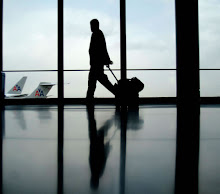Ticketing is a simple concept, once you get the hang of it. Tickets are priced using various fare basis codes and availability. Each airline creates fares for each of their routings, and routings that they sell through codeshare agreements.
For each routing, there will be dozens of different prices. Some fares will be online-only web specials while others will be last minute full-fare prices. They will all have different rules and restrictions. Common restrictions include blackout dates, advance purchase restrictions, cancellation and change penalties, and seasonality.
The more expensive the fare, the more flexible the ticket is going to be and vice versa-- don't go thinkin' that you're going to be able to change the dates on that last-minute $79.00 web special!
Here is an example of a flight availability display in the GDS Amadeus:

If you look closely, you can see that the flights being shown are flights from ORD (Chicago O'hare) and MCI (Kansas City International) on the 15th of October. The first flight that comes up is an American Airlines (AA) flight at 8:23 am. Each of those letters, with a number by it, represents a fare level.
Right now, most of the fare levels are still available, as there are no zeroes anywhere. The "F" represents a full-fare first class ticket and the "Y" represents a full-fare coach class ticket. All of the letters after the "Y" are lower priced fares, with the "O" fare being the lowest fare class available.
Here is a fare display:
 This fare display is for a flight from Los Angeles to Sydney. The column on the left shows the different fares that are available. The first letter in the fare indicates the fare basis that it needs to be booked in. In this case, the fare we're looking for is "B" class because we want that $3,076.00 round trip fare.
This fare display is for a flight from Los Angeles to Sydney. The column on the left shows the different fares that are available. The first letter in the fare indicates the fare basis that it needs to be booked in. In this case, the fare we're looking for is "B" class because we want that $3,076.00 round trip fare.
If we wanted to know the rules for any particular fare, we could pull those up (in detail) by using a rule display. Once we decide the fare that's right for you (the lowest price fare that offers the routing and rules that you want), we'd start looking for availability.
Using this fare display, we would pull up availability on US Airways (because that's the airline that fare display was for) and find a flight that has "B" space still available. We would know it was available because next to the letter "B" in the fare display, there would be a number from zero to seven. Generally, seven is the highest number they'll show.
The number shown indicates the amount of seats, on that particular flight, that are still available to purchase at that price. Once "B" class is sold out, you have to move up to the next available booking class, or find another flight that still has "B" class available.
It's really just basic supply and demand-- as a flight becomes more full, the prices on that particular flight go up. Understanding how pricing works will go a long ways towards helping you shop for the best tickets. It's also one of the reasons that using a travel agent is a smart choice-- there's no way for you to pull up a fare display or an availability display on Travelocity or Orbitz or anywhere else on the internet.
A good travel agent will be able to find you deals that you never knew were available and they'll be able to do it a lot faster than you can do it on the internet.
/shameless plug


No comments:
Post a Comment